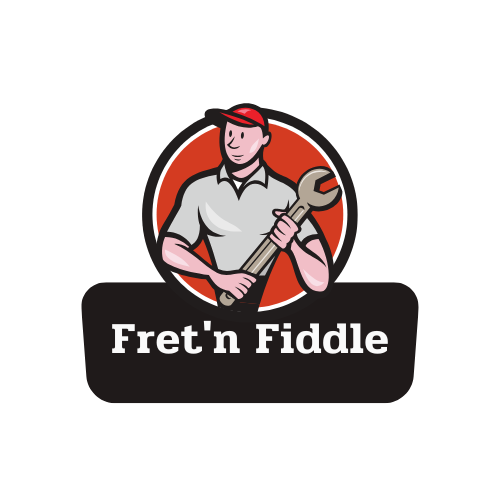Teaching your parrot to stay calm and quiet when alone can be a fulfilling challenge. Many birds experience anxiety without their owners, leading to excessive noise and distress. By using solid techniques grounded in positive reinforcement and environmental enrichment, you'll cultivate a serene setting for your feathered friend. Discover practical strategies tailored to enhance your parrot's confidence and comfort level, making those moments apart more enjoyable for both of you. Get ready to foster a peaceful atmosphere for your beloved avian companion!
Understanding Parrot Behavior
Understanding your parrot's behavior can be crucial in ensuring their well-being. Parrots exhibit a range of behaviors when left alone, and recognizing these can help you address their needs. Common parrot behaviors include vocalizations, feather plucking, or pacing. These actions might indicate how they feel about solitude.
Also to read : Crucial First Aid Tips Every Pet Owner Should Know for Emergencies
When a parrot experiences anxiety, it may display signs such as excessive screaming, self-mutilation, or loss of appetite. Recognizing these symptoms is vital for addressing their emotional health. Providing toys or interactive activities can help alleviate some of this stress, promoting a sense of calmness.
Observing your parrot's temperament is essential. Each parrot has a unique personality, and understanding their individual characteristics can help you create a supportive environment. For example, some parrots may enjoy ambient noise, while others prefer silence.
In parallel : Choosing the Perfect Lighting for Your Corn Snake”s Vivarium: A Comprehensive Guide
Signs of Anxiety in Parrots
- Excessive screaming
- Feather plucking
- Self-mutilation
- Loss of appetite
Being attentive to these behaviors and understanding your parrot's temperament can significantly improve their quality of life. By recognizing and addressing signs of anxiety, you can foster a more tranquil and fulfilling environment for your feathered companion. Encouraging calmness through interactive play and attention can make a world of difference.
Preparation for Training
Creating an optimal environment for your parrot's training journey.
Creating a Safe and Comfortable Environment
Establishing a safe and comfortable environment is crucial for effective training. Ensure your parrot's space is free from hazards, such as sharp objects or toxic plants. A well-lit area with ample space allows your parrot to move freely and feel secure. Including natural branches and perches can mimic their natural habitat, promoting comfort and engagement.
Establishing a Consistent Daily Routine
A consistent daily routine is key to successful training. Parrots thrive on predictability, which helps reduce stress and anxiety. Allocate specific times for feeding, play, and training sessions. Consistency helps your parrot understand expectations and fosters a sense of security. Remember, patience is essential as parrots learn at their own pace.
Importance of Gradual Acclimation to Alone Time
Gradual acclimation to alone time is vital in training preparation. Start by leaving your parrot alone for short periods, gradually increasing the duration. This helps them adjust without feeling abandoned. Providing toys and interactive activities during these times can keep them occupied and reduce anxiety.
Training Preparation Checklist:
- Ensure a hazard-free environment
- Establish a daily routine
- Gradually introduce alone time
By focusing on these elements, you can create a supportive setting that encourages your parrot's growth and well-being.
Effective Training Techniques
Empower your parrot with confidence through structured learning.
Positive Reinforcement
Positive reinforcement is a powerful tool in parrot training. It involves rewarding desired behaviors to encourage repetition. Start by identifying a treat your parrot loves. When your parrot performs a desired action, immediately reward them with this treat. Consistency is key. Over time, your parrot will associate the behavior with a positive outcome.
Desensitization Techniques
Desensitization helps in reducing fear or anxiety towards certain stimuli. Introduce the stimulus at a low intensity, gradually increasing exposure as your parrot becomes more comfortable. This technique requires patience but is effective in building trust. For example, if your parrot is afraid of a new toy, place it at a distance and gradually move it closer over several days.
Building Confidence Through Training Sessions
Training sessions are an excellent opportunity to build your parrot's confidence. Keep sessions short and engaging, focusing on one skill at a time. Use a combination of positive reinforcement and desensitization to create a supportive learning environment. Confidence grows as your parrot masters new skills, enhancing their overall well-being.
Training Techniques Checklist:
- Identify preferred treats
- Reward desired behaviors consistently
- Introduce new stimuli gradually
- Keep training sessions short and focused
By implementing these techniques, you can foster a confident and well-trained parrot.
Mental Stimulation Strategies
Enhance your parrot's cognitive abilities through engaging activities.
Recommended Toys and Puzzles
Providing your parrot with a variety of mental stimulation tools is essential for their well-being. Toys and puzzles specifically designed for parrots can keep them engaged and mentally active. Consider items like foraging toys, which encourage natural behaviors, or puzzles that require problem-solving skills. These activities not only entertain but also boost cognitive development, reducing anxiety.
Interactive Activities
Before leaving your parrot alone, engage them in interactive activities. These can include simple games like hide and seek with treats or teaching them new tricks. Such activities provide essential mental exercise, helping to alleviate any potential stress when they are alone. Consistent practice of these activities can significantly enhance their mental agility.
Importance of Mental Exercise
Mental exercise is crucial for reducing anxiety in parrots. A well-stimulated parrot is less likely to develop negative behaviors, such as excessive screaming or feather plucking. Regular engagement with toys and interactive activities ensures their minds remain active and healthy.
Mental Stimulation Checklist:
- Foraging toys
- Problem-solving puzzles
- Interactive games
- New trick training
Incorporating these mental stimulation strategies into your parrot's routine encourages a more fulfilling and calm environment, promoting overall well-being.
Addressing Common Challenges
Navigating the complexities of parrot training with effective strategies.
Overcoming Training Challenges
Training a parrot can present several common challenges, such as stubbornness or slow progress. Patience and consistency are key. Break tasks into smaller steps and reward each success. This incremental approach encourages your parrot to engage and learn at their own pace.
Managing Excessive Vocalization
Excessive vocalization is a frequent behavioral issue. To address this, identify triggers such as boredom or attention-seeking. Provide mental stimulation through toys and activities to occupy their time. Reinforce quiet behavior with treats and praise, gradually reducing their need to vocalize excessively.
Handling Destructive Behavior
Destructive behavior when left alone can be frustrating. To manage this, ensure your parrot's environment is enriched with safe, engaging toys. Gradual acclimation to alone time, as previously discussed, is crucial.
Strategies for Managing Destructive Behavior:
- Rotate toys regularly to maintain interest
- Use puzzle feeders to engage their minds
- Provide a variety of textures and materials
Implementing these solutions can significantly reduce destructive tendencies, creating a harmonious living space. By understanding and addressing these behavioral issues, you can foster a more positive and productive training experience for your parrot.
Expert Advice and Resources
Enhancing your parrot training journey with expert insights and community support.
Insights from Avian Behaviorists and Trainers
Gaining insights from avian behaviorists and trainers can significantly enhance your understanding of parrot behavior. Experts provide tailored advice, helping you navigate challenges effectively. They emphasize the importance of positive reinforcement and consistency in training. Seek out professionals with a proven track record in parrot behavior for the most reliable guidance.
Recommended Books and Online Courses
To deepen your knowledge, explore recommended books and online courses. These resources offer comprehensive information on parrot training techniques and behavioral understanding. Books like "The Parrot Problem Solver" provide practical solutions, while online courses offer interactive learning experiences. Investing in these resources can empower you with the skills needed to train your parrot effectively.
Utilizing Community Forums and Support Groups
Engaging with community forums and support groups offers additional guidance and support. Connect with fellow parrot owners to share experiences and solutions. These platforms provide a wealth of information and foster a sense of community. Regular participation can help you stay informed about new training methods and resources.
Key Resources:
- Avian behaviorist consultations
- Books like "The Parrot Problem Solver"
- Interactive online courses
- Community forums and support groups
By leveraging these expert tips and resources, you can enhance your parrot's training experience and foster a supportive environment.
Monitoring Progress and Adjustments
Tracking and adapting your parrot's training journey.
Keeping Track of Behavior Changes
Monitoring your parrot's training progress involves observing behavior changes over time. Documenting these changes helps to identify patterns and improvements. For example, a reduction in excessive vocalization or destructive behavior indicates positive progress. Regularly updating your observations can provide a clear picture of your parrot's development.
Knowing When to Adjust Training Methods
Recognizing when to adjust your training methods is crucial for continued success. If your parrot's behavior plateaus or regresses, it may be time to reassess your approach. Consider introducing new techniques or varying the types of rewards used. Flexibility in training ensures that your parrot remains engaged and motivated.
Signs to Adjust Training:
- Stagnant behavior progress
- Increased anxiety or frustration
- Lack of response to current methods
Importance of Patience and Consistency
Patience and consistency are the cornerstones of effective parrot training. While progress can be slow, maintaining a steady routine is essential for long-term success. Consistent feedback helps reinforce positive behaviors, while patience allows your parrot to learn at their own pace. Remember, each parrot is unique and may require different strategies to reach their potential.
By focusing on these elements, you can ensure your parrot's training is both effective and enjoyable.
Products to Aid in Training
Enhance your parrot's training experience with specialized tools.
Calming Aids
Calming aids are essential for reducing anxiety in parrots, especially during training. These products, such as sprays or diffusers containing natural extracts, help create a soothing environment. They can be particularly effective when your parrot is adjusting to new routines or spending time alone. When using calming aids, ensure they are specifically designed for avian use to avoid potential harm.
Enrichment Tools
Enrichment tools play a crucial role in promoting relaxation and mental stimulation. Items like foraging toys or puzzle feeders keep parrots engaged, reducing stress during alone time. These tools encourage natural behaviors, which can lead to a more tranquil and content parrot. Incorporating a variety of textures and challenges can further enhance their effectiveness.
Recommended Training Products
- Foraging Toys: Encourage natural foraging behavior
- Puzzle Feeders: Stimulate problem-solving skills
- Natural Calming Sprays: Reduce anxiety levels
- Interactive Perches: Provide physical and mental engagement
Selecting the right combination of training products and enrichment tools can significantly enhance your parrot's training journey. By integrating these items into their daily routine, you create a more supportive and calm environment, fostering both learning and well-being.













